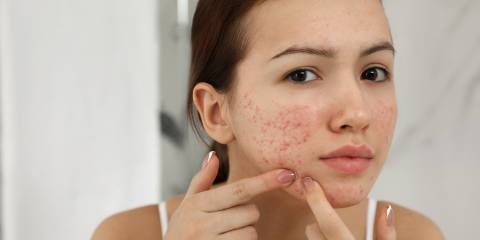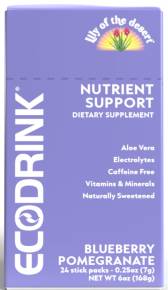An interview with “First Lady of Nutrition” Ann Louise Gittleman shares her secrets for sailing through life’s hormonal transitions—whether you’re 18 years old or 80.

“Youth is the gift of nature, but age is a work of art.” –Stanislaw Jerzy Lec
I sat down with New York Times bestselling author Ann Louise Gittleman, PhD, CNS, to talk about her latest book, Before the Change: Taking Charge of Your Perimenopause. In this interview, she shares with us some of her tried-and-true secrets for helping women sail through the hormonal changes of life. Although this book was written with perimenopausal women in mind, the information is relevant to women of all ages.
In order to keep our hormones happy, we must first understand the nature of our body’s endocrine system and how to effectively support it during vital life transitions.
In her new book, Ann Louise provides a full analysis of HRT, as well as foods and supplements that can alleviate hormonal symptoms, the pros and cons of soy, and the number one cause of hormone havoc—body toxicity. She also discusses estrogen dominance, mineral imbalances, and diseases that can stem directly from a buildup of estrogen, such as hypothyroidism. Most importantly, her book covers how to prevent and reverse the hormone-driven health challenges so many women face today.
A Q&A with Ann Louise Gittleman, PhD, CNS
Q: Thank you, Ann Louise, for being here to share your valuable time and insights with us! I think I can speak for the majority of women everywhere that hormones are a big deal for us, and we can all use a few solid tools to help smooth the transitions. First off, what made did you decide to write this book?
A: I simply wrote the book I wished I’d had when I was 40! I see so many women in their fourth, fifth and sixth decades of life struggling with hormone issues—or issues that look like hormone issues. They’re doing what I did, trying to treat each symptom as an individual problem. Instead, women need a better understanding of how hormones work, and how profoundly the endocrine system is thrown off by external factors, such as stress and hormone-disrupting environmental chemicals that operate in cahoots with our sex hormones.
There are things you can do now—and throughout your adult life—that pave the way toward a happy, healthy midlife transition. You don’t have to wait until you’re perimenopausal and miserable to begin your tuning up your hormones! Would you wait until your car is ten years old and barely running to provide its first oil change? Of course not—you do the necessary preventative maintenance. Our bodies are no different.
There are actually five different hormone systems in the body, all connected and influencing each other in various ways: sex hormones, blood sugar hormones, hunger hormones, stress hormones, and antiaging hormones. What I have observed many, many times is that women with imbalances of blood sugar or stress hormones have symptoms that are indistinguishable from perimenopausal symptoms. In other words, you may think you have an ovary problem but what you really have is an adrenal problem!
Q: It seems like women today have a tougher time with perimenopause and menopause than women decades ago. Why is this?
A: Your observation may be true. It makes sense when you think about where these symptoms are coming from. Many are related to toxicity, nutritional imbalances, stress, insufficient exercise, inadequate sleep, and the myriad of other factors associated with our modern-day lifestyle—not simply age-related hormone changes. These factors complicate our body’s ability to adjust and compensate.
Hormones control every aspect of our physiology, and today our world is simply loaded with hormone-disrupting agents, from the water we drink and the food we eat to the air we breathe—not to mention stress, which has profound hormone-altering effects. These are all major players in our escalating rates of chronic disease. Our bodies are so busy coping with environmental stresses that precious few resources remain to deal with the mental and physical changes that occur as we age. Our hormones are upside down, our immune systems are on overload, our livers are congested, and our adrenals are at Defcon 1.
Q: You mentioned chemicals are affecting our hormones. Can you elaborate? What kinds of chemicals should we be on the lookout for?
A: There are more than 80,000 chemicals registered for use today, with more than 60,000 having been released to market without any safety testing.[i] Xenoestrogens are one type of environmental toxin with especially wicked effects on our estrogen physiology and liver.
Xenoestrogens are human-made chemicals that act as “estrogen mimics,” interfering with normal estrogen function and overloading the liver as it struggles to metabolize these hormone imposters. The result is decreased estrogen excretion from the body which leads to estrogen dominance, congested bile and sluggish detoxification—all of which increase your body’s toxic load. Xenoestrogen exposure comes from automobile exhaust, detergents, polychlorinated biphenyls (PCBs), polycyclic aromatic hydrocarbons and other sources.
Xenoestrogens are a thousand times more potent than the body’s natural estrogen, meaning your liver has to work that much harder to eliminate them. Even in the smallest doses they can wreak havoc with your natural estrogen receptors, and this results in a slew of hormone-driven symptoms such as depression, headaches, brain fog and accumulation of body fat. Xenoestrogens can also interfere with your ovaries’ and adrenals’ manufacturing of estrogen.
Q: So, it sounds like perimenopausal symptoms may be as much a toxicity problem as a hormone problem. You mentioned estrogen dominance--can you explain a little more about that?
A: Our bodies need a proper balance between estrogen and progesterone. When estrogen accumulates, you develop estrogen dominance. Estrogen dominance is not reserved for perimenopause—you can become estrogen dominant at any age. Typical symptoms include breast swelling, bloating, mood swings, irregular periods that may be heavier, loss of libido, sugar cravings, water retention, brain fog, fatigue or low thyroid. Poor estrogen metabolism can also lead to more serious problems over time such as breast, endometrial, and cervical cancer. [ii]
Interestingly, estrogen dominance affects men, as well as women. However, in men we see a disruption in estrogen-testosterone balance, as opposed to the estrogen-progesterone upset seen in women. Men and women have similar symptoms, including decreased libido and weight gain. Men also can experience hair loss and prostate problems. In both sexes, estrogen dominance is linked to a tired and toxic liver.
Q: You are giving me a new appreciation for the importance of my liver! A little while ago, you mentioned congested bile in relation to estrogen. What’s the connection there?
A: Many people don’t realize that bile plays a critical detoxification role by ridding the body of excess estrogen, as well as flushing xenoestrogens out of your body. Bile is a yellow-green liver secretion that helps with the digestion of fats in the small intestine, but it has other important roles.
Bile traps toxins so they can be excreted from your body via the intestines. As we age, these toxins build up in our bodies, resulting in thicker bile that no longer flows freely. Congested bile is the ideal setup for gallstones, the number one factor behind gallbladder surgeries today. Excess estrogen only complicates matters, driving up cholesterol levels in the bile which further contributes to congestion. To pile on another concern, stress decreases bile quality.
But it gets even worse. Bile can also make or break your thyroid function and consequently, your metabolism. Thyroid specialist Dr. Antonio Bianco found that people who improved their bile increased their metabolism by a whopping 53 percent! His research also showed that release of bile triggers the release of an enzyme that converts T4 into T3, which is critical for proper thyroid function. [iii] [iv] The American Thyroid Association states that one in eight women will develop a thyroid disorder, and women are five to eight times more likely than men to develop thyroid problems. AND, thyroid symptoms masquerade as perimenopause.
Thyroid issues typically go undiagnosed, particularly when a doctor relies solely on a standard test of TSH and T4 levels. High estrogen can elevate thyroid-binding globulin (TBG), a protein that binds to thyroid hormones and assists them on their journey through the bloodstream. High TBG means that much of your body’s thyroid hormone is bound up and unavailable for use by your cells, and this creates a shortage—which can be going on in spite of “normal” thyroid levels.
When you have a healthy liver and healthy bile, you are well on your way to a healthy thyroid—therefore, supporting these may be your most important task for helping your body navigate hormone fluctuations, before, during and after the change.
How do we improve the bile? The first step is to detox, which signals the body to thin the bile and get it flowing again. Eat plenty of fiber-rich foods and begin your day with hot lemon water. Consume high-quality proteins with each meal and add more saturated fat into your diet (coconut oil is a great choice). Whether or not you have a gallbladder (which moderates the release of bile), a bile supporting supplement may be helpful. I recommend Bile Builder from UNI KEY Health. Iodine deficiency is the most common cause of hypothyroidism, so make sure you’re getting enough iodine as well.
Q: You mentioned the adrenals earlier. Is adrenal fatigue a factor in perimenopausal symptoms?
A: Absolutely! Your adrenals are your ovaries’ backup system. As such, they are designed to step in and assist with your body’s declining hormone output. I cannot emphasize enough how large a role stress plays in hormone balance. If you’re approaching menopause, simply dealing with the transition often constitutes a stressful experience, but add to that the stresses encountered in daily life and your body may find itself struggling to keep up.
Chronic stress exacerbates “perimenopausal” symptoms and dumps a whole array of other issues into your lap. Remember those stress hormones? If your adrenals become exhausted and your cortisol levels become erratic, all bodily processes may cease to function at full capacity. This means your body is not well equipped to handle even ordinary hormonal fluctuations—regardless of your age.
You can tame the cortisol monster by consuming a wide spectrum of vitamins, minerals, adaptogens, high quality proteins and healthy fats on a daily basis. It is also important to improve your stress management skills and get plenty of exercise and sleep every day. Without good sleep, your brain is unable to detox. Supplementation with up to 2,000 milligrams of pantothenic acid daily may also help replenish the adrenals.
Q: What other nutritional tips can you give us to support our bodies as we get older?
A: One mineral imbalance that’s notorious for stirring up hormonal problems is the zincto copper ratio. When copper is present in the proper amounts, it supports vital enzymes and biological processes, but rising copper levels paired with falling zinc levels set you up for estrogen dominance. Copper imbalance is highly prevalent, affecting nearly 80 percent of all men, women and children. Symptoms of copper excess include fatigue, obsessive thoughts, poor memory, sleeplessness, depression and mood swings, Candida overgrowth, low thyroid and migraines headaches.[v]
Zinc helps balance estrogen and increase progesterone levels. It also builds strong bones and keeps your immune system robust. Copper levels tend to rise or fall in tandem with estrogen, and zinc in tandem with progesterone. Zinc levels typically drop during perimenopause. Not surprisingly, perimenopausal women tend to be copper heavy and zinc light—so think estrogen dominance. Stress is the number one cause of zinc deficiency.
To reduce your copper exposure, avoid copper cookware and copper-containing supplements. Other sources include water from copper pipes, soy, margarine, corn oil, organ meats, shellfish, wheat germ, wheat bran and yeast. Many dental appliances also contain copper. Vegetarian diets are typically zinc deficient because zinc is more plentiful in animal products. Consider supplementing your diet with 15 to 50 milligrams of zinc daily.
Q: Ann Louise, what about food cravings? So many of my female friends struggle with those!
A: Get the sugar out! This is one of my prevailing mantras for overcoming hormonal woes. Replace sugary foods with high-quality proteins, fats and compatible carbs (preferably grain-free). Eating sufficient protein, fat and fiber with every meal helps stabilize blood sugar levels. And move your body more! Food cravings generally worsen with inactivity. I have also found that taking 500 milligrams of the amino acid L-glutamine twice a day, between meals, helps with cravings for sweets.
A sizable sweet tooth may stem from a yeast overgrowth. To kill off that nasty opportunist, try oregano oil, SF-722 (from a castor oil extract), caprylic acid, or the homeopathic Y-C Cleanse from UNI KEY Health. Other supplements that may help are chromium (200 to 500 micrograms daily), manganese (10 to 30 milligrams daily), and vitamin C (3,000 milligrams daily).
The bottom line is, there is no rule that says menopause has to be miserable! We have only covered a few highlights here, so if you want to learn more, Before the Change is a treasure trove that will help you navigate through all the stages of life with health, vitality and ease. By addressing the factors that underlie your symptoms, you can feel young and healthy once again—into menopause and beyond!
Visit Ann Louise on Facebook for her new LIVE Q&A broadcasts Thursdays at 7pm EST/4pm PST
©2017 GreenMedInfo LLC. This work is reproduced and distributed with the permission of GreenMedInfoLLC.
Want to learn more from GreenMedInfo? Sign up for the newsletter here: http://www.greenmedinfo.com/greenmed/newsletter





